The Albanian coastline from Ksamil to Livadhi, Albania
Two days spent on the Ksamil Peninsula
The first day in Ksamil
Short description. In the morning, I stayed in the campground and by noon, I went to the Butrint Archaeological Site. In the afternoon, I sunbathed and swam at one of the beaches near the Three Islands of Ksamil.
Long description
Although I still was very sleepy, the tent was too warm to sleep inside at 7.30 in the morning. Linda (the hostess) offered me an ice-coffee, which I enjoyed until noon, in the shade of an umbrella. It was very hot outside but I still went to the Butrint Lake, without too much enthusiasm, though. The Vivari Canal linked Butrint Lake to the Ionian Sea. The canal even had a mini-delta, thus having both salty and sweet water. A wooden ferry crossed the canal from one side to another and transported cars and travelers.

Butrint – the cable bridge that takes cars and people from one side of the Vivari Canal to the other side.
I parked the car in front of Butrint’s archaeological site, in a parking lot with full sunlight. The dashboard of the car showed that it was 45 C degrees outside under the sun. As I got out of the car, a boatman tried to sell me a boat ride to the sea-edge of the Vivari Canal. He said that the famous Castle of Ali Pasha sat there and it was accessible only on water. I preferred to go to the ruins of Butrint ancient city, though. Butrint was listed as a UNESCO world heritage site for the value of its cultural landscape, a rare combination of archaeological remains and nature.
Inhabited since prehistoric times, Butrint included ruins that belonged to each stage of construction of the ancient city: Greek, Roman, Byzantine, Venetian, and even Ottoman. Butrint archaeological site featured Roman baths (with mosaics carefully protected by gravel), Greek theater (later transformed into a Roman one), Hellenistic stoa, and agora. It also included a Roman forum, gymnasium, and palace. Paleo-Christian baptistery (with mosaics protected by a thin layer of sand), basilica, and nymphaeum. The entrance gates to the fortified ancient city were built of cyclopic stonework, without using mortar. A Venetian fortress with towers sat in the former place of the Acropolis and accommodated a museum with Roman statues. The ruins of an aqueduct stood as a proof that once it brought water to the Roman neighborhood built on the other side of the Vivari Canal.
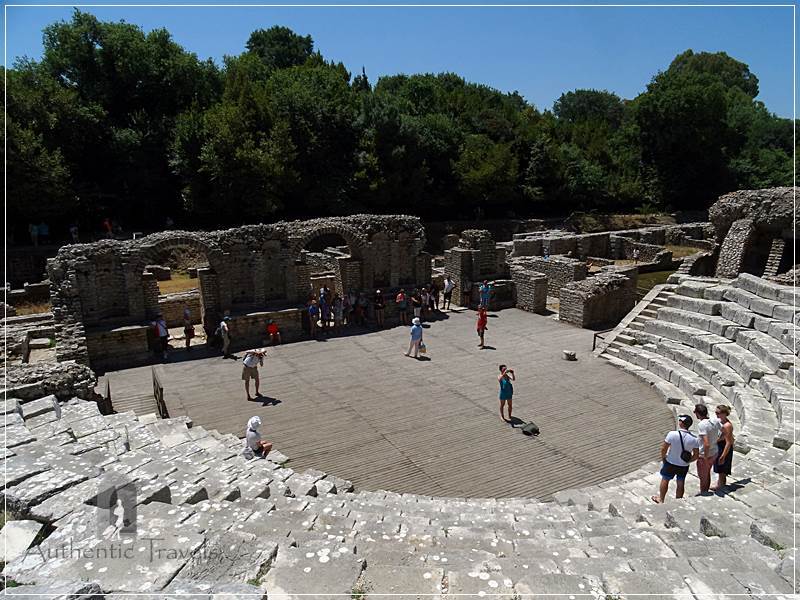
Butrint Archaeological Site – the Greek theater, later transformed into a Roman one, with a walled scene
While I was exploring Butrint, I noticed isolated small bays with fishermen huts or mussels pickers. A diver picked mussels from nets set on the floor of the lake. He filled a box with mussels under the water. Then, he brought the box on a floating platform at the surface of the lake. Other workers unloaded the box into a heap of mussels. They stuffed the freshly picked-up mussels into a tube and the tub into a circular mesh. Eventually, they removed the mussels packed in the mesh, ready for delivery.
From Butrint, I went to the three islands of Ksamil. I had a hard time finding a parking spot near the main beach (the one facing the islands). Eventually, I ate seafood spaghetti on a terrace, then searched for a sun lounger. Until evening, I swam several times to one of the nearest islands and sunbathed.
In the evening, I came back to the campground where I spent some time with my neighbors from Romania – Tiberiu and Cristina, Emanuel and Nicoleta. They returned to Romania the following day. We enjoyed eating grilled trout, dumplings stuffed with plums, and ice cream. They had been coming to Ksamil for many years. The Ksamil campground was their favorite spot for summer holidays, and they planned to come there the following year, too.
The second day in Ksamil, I spent most of my time in the campground. I wrote, selected pictures, and planned the rest of my stay in Albania. As I was working, I had assistant-turtles that slowly roamed the garden in search of shade. Later, I went to the beach and had mussels at a taverna, then laid on a lounger by the water.
Along the Albanian coastline – from Ksamil to Livadhi
The first day from Ksamil to Livadhi
Short description. I stopped at the wild beach in Lukovë, then at the one in Borsh. In the afternoon, I reached the small bay in Porto Palermo, which had a castle and a beach by a hypnotic clear water. In the evening, I passed Himarë resort and then drove downhill to Livadhi. There, I went to a local campground and pitched my tent.
Long description
I was impatient to drive the famous Albanian coast along the Ionian Sea. Unfortunately, I had to turn down Linda, who kindly offered me another Nescafe. I left Ksamil and passed the city of Sarandë on the ring road. In Lukovë, I drove down a serpentine road that snaked among olive groves until it reached a secluded pebbled beach. The beach in Lukovë was quite deserted, wild, and relatively unpopulated. However, I noticed campervans parked by the beach, in the only place shaded by trees. A tavern and a white chapel sat next to the beach, overlooking the sea.
I drove back to the road running along the Albanian coastline and continued toward Borsh. There, my stomach forced me to quickly turn left and stop at a tavern by the beach. I had a big portion of seafood spaghetti (very popular in the area). An Italian sitting at the next table offered me a glass of wine but I don’t drink alcohol. I turned him down and had to politely accept his business card instead. He was a painter searching for inspiration throughout Albania. After lunch, I enjoyed a cold Nescafe laying on one of the sunbeds at the New Paradise terrace. During those moments, I realized the perfection of the then-moment – beach, sun, azure waters, writing, Nescafe.
I drove along the Albanian seaside and stopped at the small bay in Porto Palermo. The cove had calm, clear water, a deserted small church, a few campervans, and sun loungers with straw umbrellas. A triangular medieval castle with pentagonal towers dominated the peninsula from atop. The fortress was a bit ruinous but still suggestive for the defense architecture of the Middle Ages. The guard of the fortress came to explain me the history of the fortress, in a poor English, though. Ali Pasha of Tepelene reconstructed the former Venetian fortress during the Ottoman period (including a harem and a hamam). The fortress became a prison during the communist period. I overstayed in Porto Palermo for about two hours since the beach and the water literally hypnotized me.
When the sun burned me too much, I left Porto Palermo and headed to Himarë. Himarë was a seaside resort slightly developed but it also had an old fortress on a nearby hill. When I exited the town, I turned left at the first crossroads and steeply drove down to Livadhi. Once I reached the beach, I started to study the offer of campgrounds. I finally decided to stay at Moskato Camping, where I also dined at their terrace (Greek salad and two small Albanian kebaps).
The second day in Livadhi
Short description. I climbed up to the deserted fortress of Himarë, then went to the seaside resort. After lunch, I returned to Porto Palermo and went with Assaf to his fish farm.
Long description
Early in the morning, a cock was singing near my tent for half an hour. Then, the cicadas were singing in the trees. Even though I had slept under a tree, the sun forced me to get out of the tent at 8 a.m. After a swim in the sea, I climbed up to the old fortress of Himarë. I parked my car under the trees in the central square and walked to the fortress on a cobbled street. The old fortress was almost deserted, but it had expansive views over the Livadhi Bay. Only two houses seemed inhabited. The Greek community would have left in 1990, but some of them would have come back later. The rest of the houses, including churches, were ruined, but pink oleander in bloom had spread all over the place.
When I returned to the car, I found a message from Assaf from Vlorë. He was going to his fish farm in Porto Palermo and invited me there. On my way again to Porto Palermo, I stopped for a short lunch break in Himarë. I ate a huge pancake made by a novice who had just learned how to make it. After that, I headed toward my favorite cove in Porto Palermo and met Assaf.
Assaf was Jewish. His grandparents were Jews from Romania. His father was born in Romania, his mother in Israel. Therefore, Assaf had the right to request a Romanian passport. He had studied marine biology. 10 years ago, he got a job as a manager at a fish farm of an Israeli-Albanian company. When the price of the fish went down during the 2008 crisis, the Israelis withdrew from the market. Assaf stayed and further partnered in the deal, though. Meanwhile, his wife Schila had opened a pastry with Israeli cakes in Vlorë.
We took a boat and went to the farm fish when the sun was right above our heads. From ashore, I could see only three circular enclosures of the fish farm. On our way to the farm, massive, ugly concrete bunkers dotted the coast from place to place. The bunkers had been built by Enver Hoxha (the communist dictator) in case of a possible invasion of Albania. The boat tossed on the waves. Unfortunately, I got motion sick until we reached the fish farm.
The fish farm had five enclosures, but only three had fish (bream): young ones, bigger ones, and adults. As we fed the fish, the floating fish farm was more stable than the boat and I felt better. The fish must be fed three times per day. They jumped up and fought between them for the food. From time to time, the underwater nets of the enclosures had to be checked by divers. Otherwise, the fish ate them and could escape. The fish ate more during summer, while they hibernated in winter.
Prior to departure, Assaf showed me the container with bunk beds where he slept when he came to the farm. In the evening, I returned to the campground in Livadhi and dined at the terrace of Moskato Camping, almost empty at that hour.
The Albanian coastline – from Ksamil to Livadhi is another diary from Albania, about the days I spent exploring the Albanian Coastline (you can find the version in Romanian at Litoralul Albanes – de la Ksamil la Vlorë). The following post about the Albanian Riviera can be found at The Albanian coastline from Livadhi to Vlorë, passing Dhermi. And here are all my Travel Diaries from Albania, the Balkan Countries (x 7).
Have you been to Albania or plan to go there? Leave a comment on this post and tell me what you liked about Albania or what you’re interested to see there.
Want to subscribe to my travel diaries? Just leave your email in the subscription form below and you’ll be notified when I publish a new travel diary.
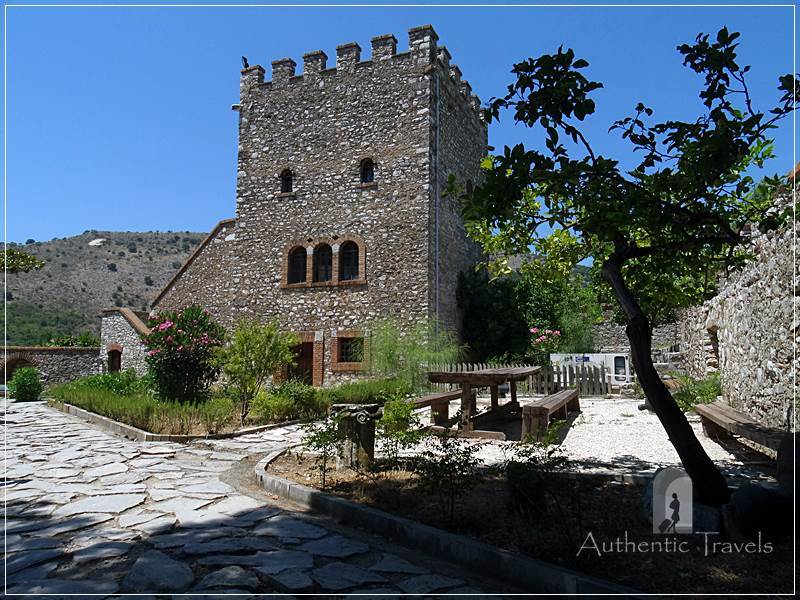
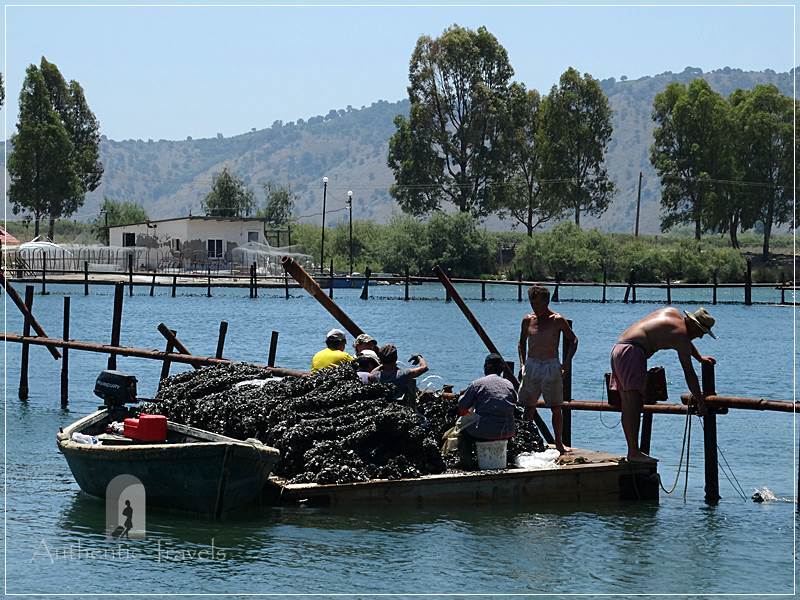
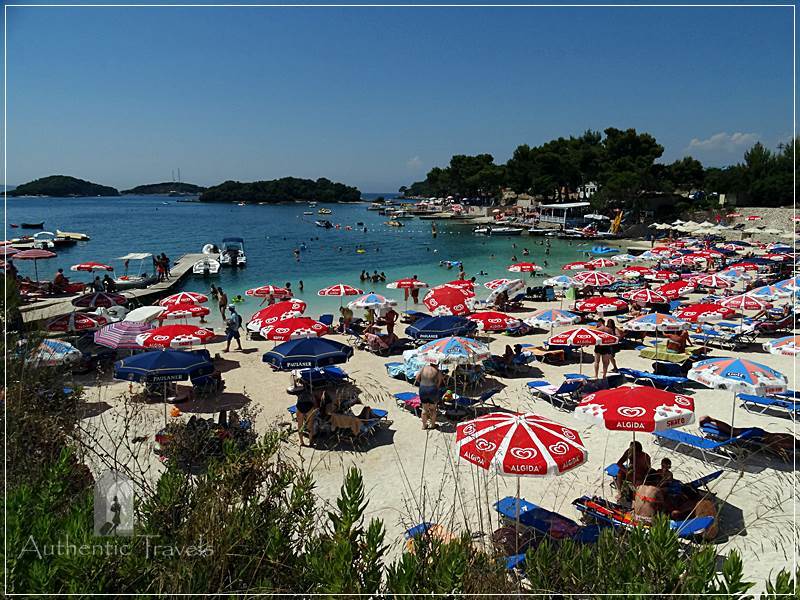
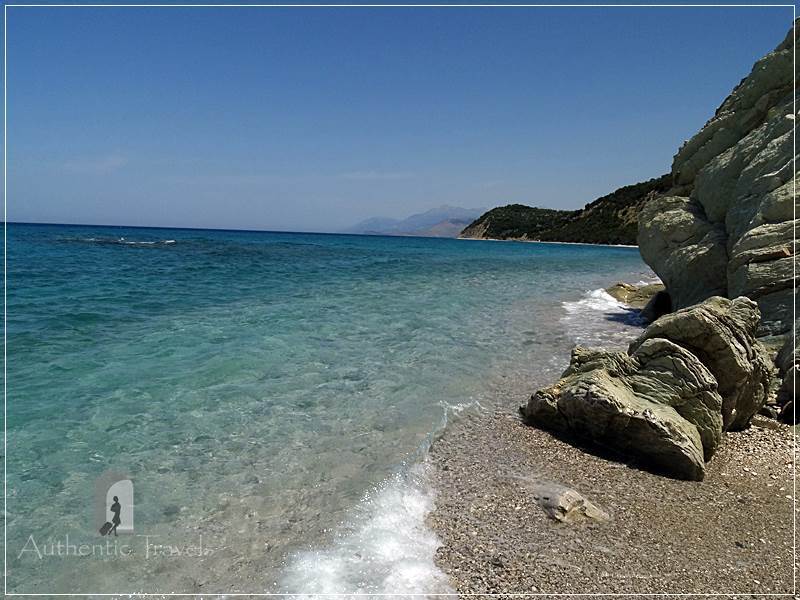
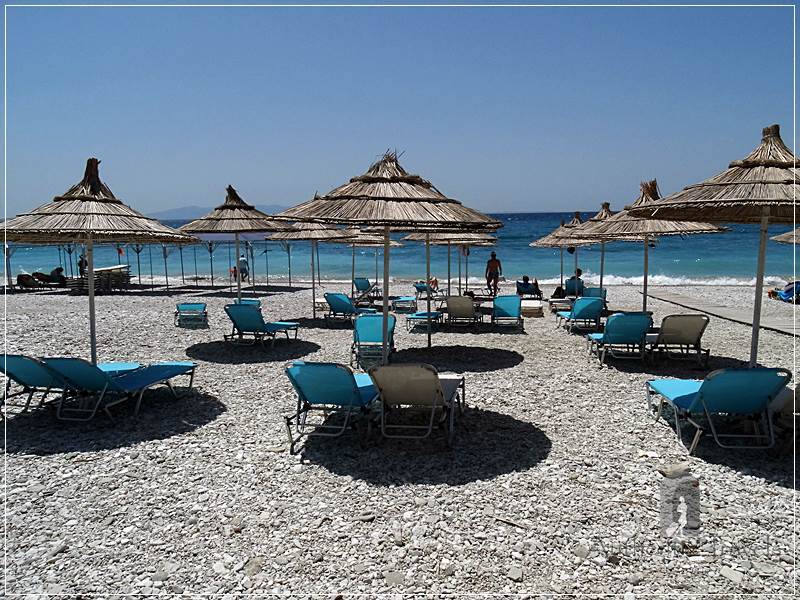
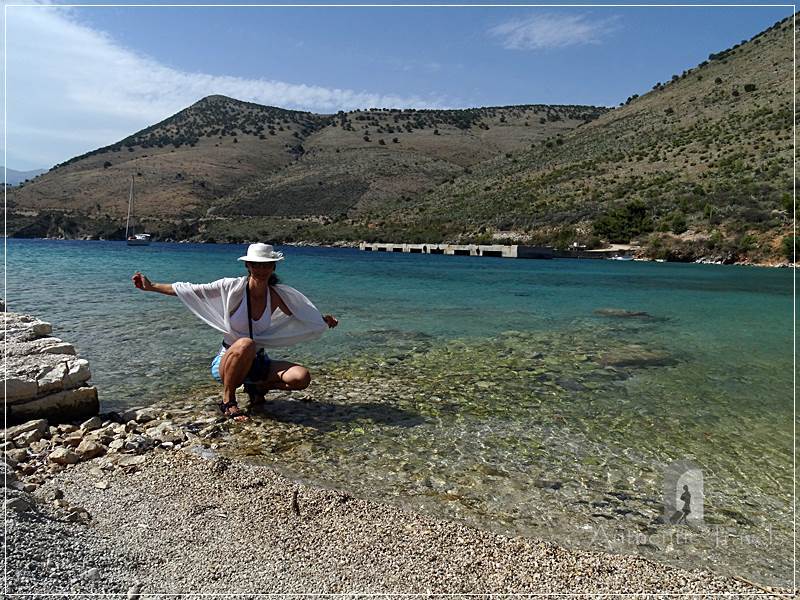

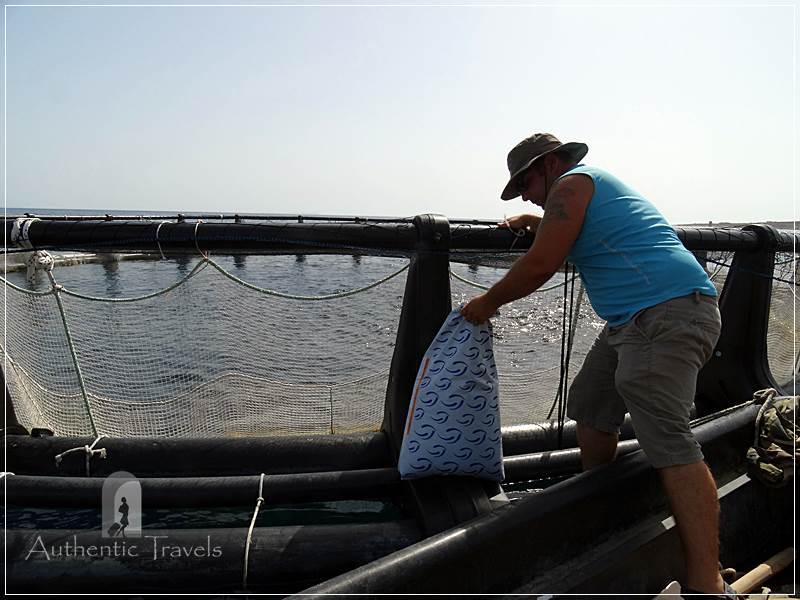
Butrint archaeological site looks so interesting. Sounds fascinating seeing the fisherman huts there as well. It sure looks like a destination out of the tourist traps. I would love to visit places like this in Albania. Thank you for sharing your experience 🙂
This all sounds lovely! I’m not good at lying on the beach, but if I could also explore ruins from various epochs and swim to islands…that sounds amazing. I’ll have to plan my trip for the shoulder season, though, since I hate the heat. It sounds like it’s not your favorite, either.
I know the feeling where the sun forces you to wake up from the heat! I can’t remember the last time I Went camping, but your grill night with the trout and dumplings sounded amazing. I want to see those photos! 🙂
Wow a boatman tried to see you a boat ride right away? I wonder if he was right about being accessible only by water. I Love UNESCO sites. WHat a great experience.
I haven’t been to Albania and I have to admit it’s still not in my radar. Add to it the 45 degrees during summertime. I’m not a fan of that temperature. But reading and looking at the pictures from the archaeological site, if there’s an opportunity, I would like to visit during fall season.
The Albanian coastline looks so heavenly. The water by the Lukove Beach is so clear!! Borsh Beach seems so quiet – what a perfect place to relax!
This is something new. Albania hasn’t popped out much among travel bloggers recently though it seems quite interesting in terms of historical sites. Plus the beaches are awesome, too.
I would add that it is still very cheap because they are not part o the Eu yet.
This is such a pretty coastline to explore. I’ve not yet been to Albania, but I love being by the sea, and seeing islands like Ksamil. I spend a lot of time in Italy, and can see some similarities with the landscape here too. It seems like you met some interesting characters during your journey there too! A lovely read.
Albania is just across Italy and half price then Italy, so imagine many reasons to go there.
Albania isn’t somewhere that I’ve really wanted to go to to be honest but your pictures are great! This sounds like a really interesting and different trip! I’ll have to research Albania more
I guess I need to improve my geography skills because I wouldn’t even have guessed that Albania had a coastline, let alone a beautiful one!